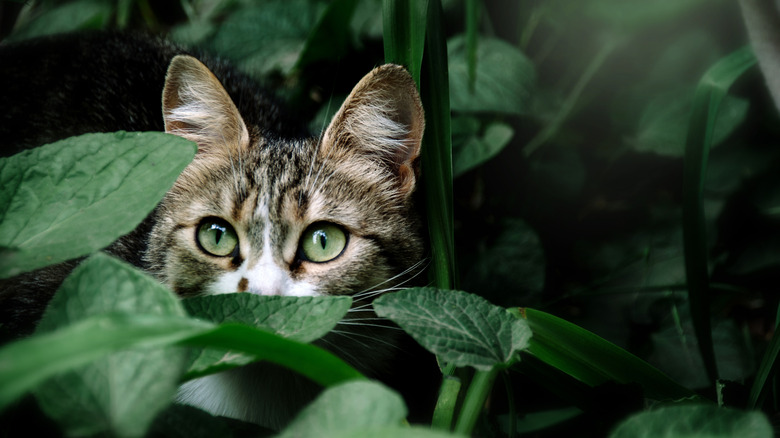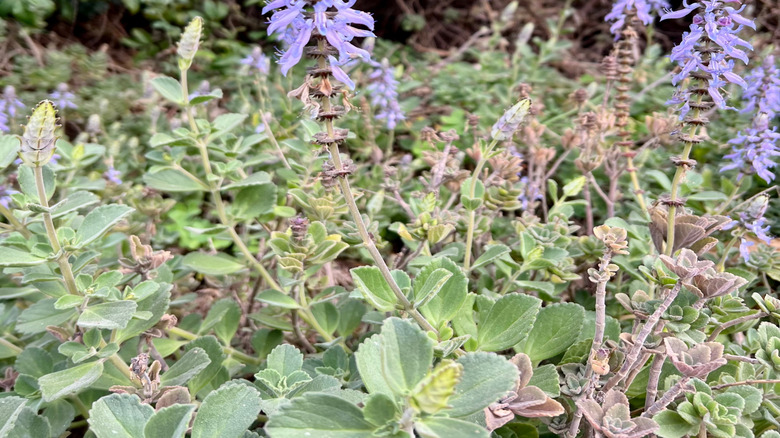The Fast-Growing Ground Cover That May Deter Unwanted Visitors From Your Garden
While cats can be adorable and wonderful pets, they might not be the best thing for your flowerbeds. Cats don't hesitate to use the garden as their own personal bathrooms, and they can dig up seeds or seedlings in the process. If you've got cats, rabbits, or other small mammals that have worn out their welcome in your garden, try planting an easy ground cover to deter them. The scaredy cat plant, or panadol, (Coleus caninus) might keep them away.
If you want to know how to stop a cat from using your yard for a toilet, then panadol might be the way to go. Originally found in Africa, panadol is an easy-to-grow ground cover in the mint family. The plant got its "scaredy cat" nickname from its rumored ability to repel cats because of its distinctive odor. This flowering ground cover smells like cat urine, and it's even named the "pee-off plant" in England. The good news is that its skunk-like scent usually only bothers cats, rabbits, foxes, and dogs — humans aren't likely to notice it.
The smell is really released in force when animals rub against the plant. It's a stress response from the panadol. This means, the pungent aroma isn't likely to bother you or other people in the garden unless you crush or damage the plant. Besides, panadol might be worth growing simply for its pretty violet and blue flowers that bloom through late summer. This plant can grow quickly to form an attractive ground cover in no time.
How to grow the panadol ground cover in your garden
Panadol is fairly easy to grow. Like most ground covers, it can help prevent soil erosion and weed growth. (You can also prevent weeds from taking over by planting a beautiful blue ground cover like hardy plumbago.) Panadol prefers sun, but also can tolerate some shade. It can grow up to 3 feet tall and 2 feet wide.
Note that this plant doesn't stand up to cold very well, though. It prefers USDA Plant Hardiness Zones 10 through 11, but can also survive winters in zones 8 and 9 if it's mulched. If you live in a colder climate, you can always plant panadol in containers that you can bring inside before the first freeze hits. Typically, panadol is often sold as a plug, so you'll likely need to plant it in small containers inside first before transplanting outside into garden beds. Always check the sprouts of any signs of blight or disease before moving it outside. You can also spread panadol through cuttings or division.
Panadol doesn't need a ton of water. Once it's established, the plant is a drought-resistant perennial that's low maintenance. While it might deter certain animals, panadol attracts pollinators like bees and butterflies to your yard at the same time. It's a great ground cover option — unlike certain other pervasive kinds of ground covers that aren't worth planting in your yard or garden.

